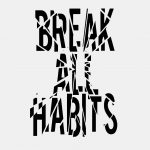Our body language is the sum of all the subtle (and sometimes not so subtle) signs that we give out all the time. Spies and spooks are trained to not give anything away. Poker players do their level best not to have any “tells”. The list goes on.
Whether we like it or not, there are always these signs going on with us and with everyone we meet.
If you’ve ever had a gut reaction about someone that you couldn’t quite pin down, that’s almost certainly you reading their body language.
It’s not an exact science
 Body language is often used in NLP (neuro linguistic programming) and you can easily find checklists that you can use. These are good as a starting point but they’re not 100% reliable – mainly because there are people involved and we’re not all wired the same way. But the more of these ducks you have in a row, the more likely your conclusion is to be correct.
Body language is often used in NLP (neuro linguistic programming) and you can easily find checklists that you can use. These are good as a starting point but they’re not 100% reliable – mainly because there are people involved and we’re not all wired the same way. But the more of these ducks you have in a row, the more likely your conclusion is to be correct.
- Posture – folded arms and/or crossed legs are generally said to mean that the person isn’t being totally open about what they’re saying. That could be true but equally it could mean they aren’t completely comfortable either talking about whatever subject you’re currently on or they may not be comfortable talking to you.
- Head gestures – these are common with politicians who will say they totally agree with a statement but will shake their head. Or they’ll say “no” but nod their head. This can be a good clue that the person speaking isn’t telling the truth (that’s why it’s easy to check with politicians)
- Eye movement – there’s a lot of talk that where a person’s eyes move to indicate whether they’re recalling an actual past event or one that’s been made up, Looking up and to the left is supposed to mean they’re telling the truth, whereas a glance up and to the right means their words are less than truthful. The main snag with these clues (apart from you needing to be reasonably close to the person speaking) comes back to how people are “wired”. Much like people being left or right handed, the outward symptoms can be reversed so you need to go into some kind of awkward “lie detector” series of questions to give you a bench mark.
- Perspiration or sweat – it’s often thought that excessive sweating can be a sign of telling lies. This isn’t a reliable indicator in it’s own right either – some people sweat more than others, other people sweat less and stress can cause us to sweat more (or less) depending on the circumstances.
- Breathing patterns – much like sweating, these can be a clue about the state of the person you’re talking to but, again, they can’t be taken on their own.
- Covering their mouth – if someone keeps covering their mouth when they’re talking to you, that can mean that they subconsciously don’t want their words to escape into the real world.
- Facial expressions – a kind-of catch-all term for anything else that’s happening. We kind-of know when people are looking surprised or angry or sad. But these states aren’t always an indication of what’s going on inside the person’s head. Good actors can conjure up all these feelings (and more) visually without actually experiencing them physically.
- Fidgeting – playing with a pen, gripping the arm of a chair, constantly playing with glasses, generally looking nervous and shifty. These can be indicators that something is amiss with the person you’re talking to.
- Speed of talking – you need to take into account how fast the person normally speaks. This could be affected by where they live – people in large cities seem to talk faster than people from rural areas. So a change from their normal pace could be quite a good indication that something isn’t right. Or it could just be the person reacting to you – some people make other people feel tense and nervous.
- Lots of ums, errs and pauses – these can be used as distractions and time to gather thoughts by the person you’re talking to, Or it could just be that they’re unsure of their facts and don’t want to say something that subsequently turns out to be wrong.
The trick with body language is to use the sum of the parts.
Any one thing on it’s own is probably just that – one thing on its own.
A combination of items tips the balance towards your conclusion being much more likely,
And if you’d like to go into a lot more depth about body language, check out this free report.



